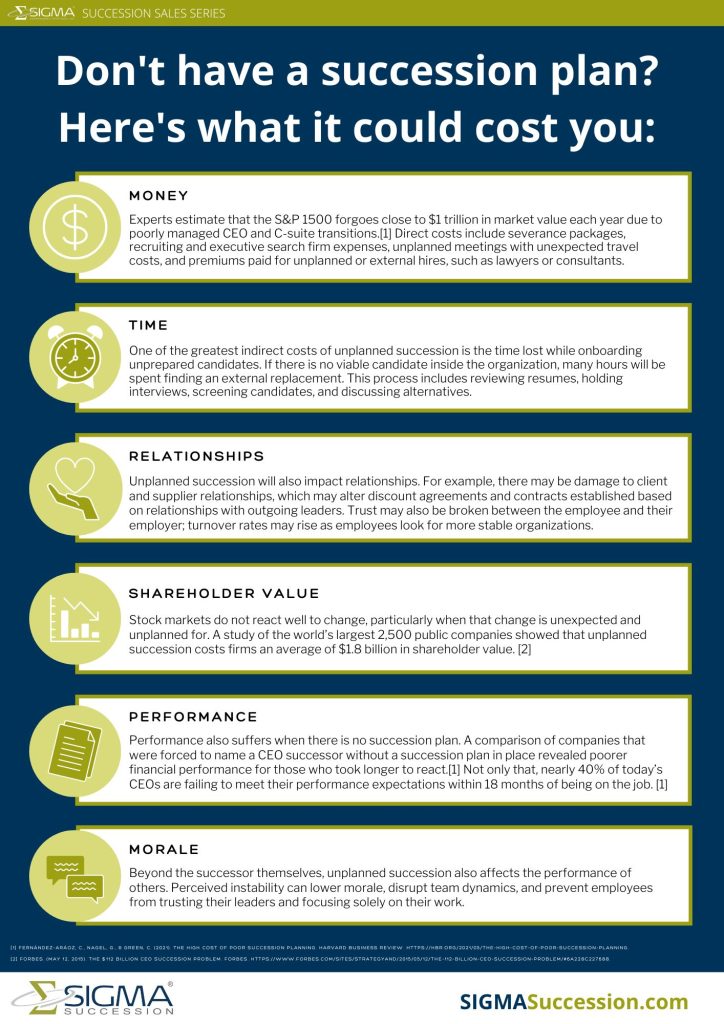Prepare for the Future with Succession Planning
Succession Planning is Future Planning
Succession planning is all about preparing for the future. It helps you consider what your company will do in the case of sudden, unexpected loss to your leadership team, and allows you to prepare well in advance. The most effective succession plans, however, don’t just plan for a new CEO or executive or leader in a present-focused vacuum. Succession planning should account for impending changes within and beyond your organization. Consider using a user-friendly succession process and external succession planning consultant to ensure your plan best prepares your company for the future. Here, we outline some of the key areas of future planning you should include in your succession plan.
How to Prepare for the Future with Succession Planning
Consider the Trends in Your Industry
To begin thinking about how the future will impact your company and employees, it’s important to have a good understanding of the trends within your industry. Begin this by looking back: how have things changed over the last year? Five years? What about over the last decade? Past trends are an important indication of where the future might take your industry.
Next, think about how different factors might influence the future of your industry. What are the predictions for the financial climate? Are there any legal rulings or regulations that may shape the next few years? How does social climate and the resulting trends impact your area of business? If your company has a global presence, how might these trends differ across countries or continents? When looking at the future of your organization, it is essential to consider the cultural environment your industry exists within.
Picture the Future of Your Company
Within the context of your changing industry, begin to envision the future of your company. How has your company been changing in the past? How have you adapted to any challenges you’ve faced? Where is your strategic planning taking you in the future? Look at your company’s place in the industry, as well as your internal environment when planning ahead.
There are a few keys areas companies might consider for the future of their company. Is your company experiencing growth, stability, or a recession? Is this something that will change over the coming years? Will you be seeking to expand your customer base? Reflect on how your company might change to meet these trends. You should also consider your employee needs, and how changes to their demands or expectations will influence policy within your organization. Finally, don’t discount the impact technology and new innovations might have on the future of your company. The exact nature of these changes might be hard to predict, but their influence on your business is an inevitability that cannot be ignored.
Plan for Changes in Leadership Needs
Next, begin to narrow your focus. Most succession processes include extensive plans for the executive leaders of a company. Consider how, as a whole, the skills of your senior management team might need to change over the next few years. Based on changes in your industry and company, will leaders need to adjust their focus or priorities? Will they need to boost their business acumen, focus on their customer/client interactions, or become better coaches and mentors? Consider the traits and competencies that may currently be less focal, but could add significant value going forward.
Reflect on the Future of Focal Roles
Finally, use a critical eye to examine the future of independent critical roles. In any given position, are the demands for certain skills growing? Are the needs for others disappearing? Job descriptions are excellent sources of information for understanding what’s needed for success in a role, however, they are often updated too infrequently to capture the full responsibilities of a role. Reflect on whether or not the role has grown over time, with the incumbent taking on new responsibilities. Consider how it could be changed going forward to best meet the needs of departments, teams, and individual employees. This process can and should occur for roles at all levels of the organization.
The Cost of Not Having a Plan

Download Infographic: The Cost of Not Having a Succession Plan
How SIGMA Can Help
At SIGMA, we want to help your company prepare for the future. We use a multi-focal lens, looking at the current state of your organization, the environment in which you operate, and your company’s goals and ambitions. The best way to plan for the future is to understand it, and we can help you get there.
If your company is looking to develop a succession plan, check out our Succession Template Guide and downloadable templates for tips to get you started. To make the process easy and painless, check out our Succession Planning Launch Series, which delivers a personalized Succession Plan to your company in just 30 days. Contact us to learn more about our succession offerings and how we can help your company plan for the future.